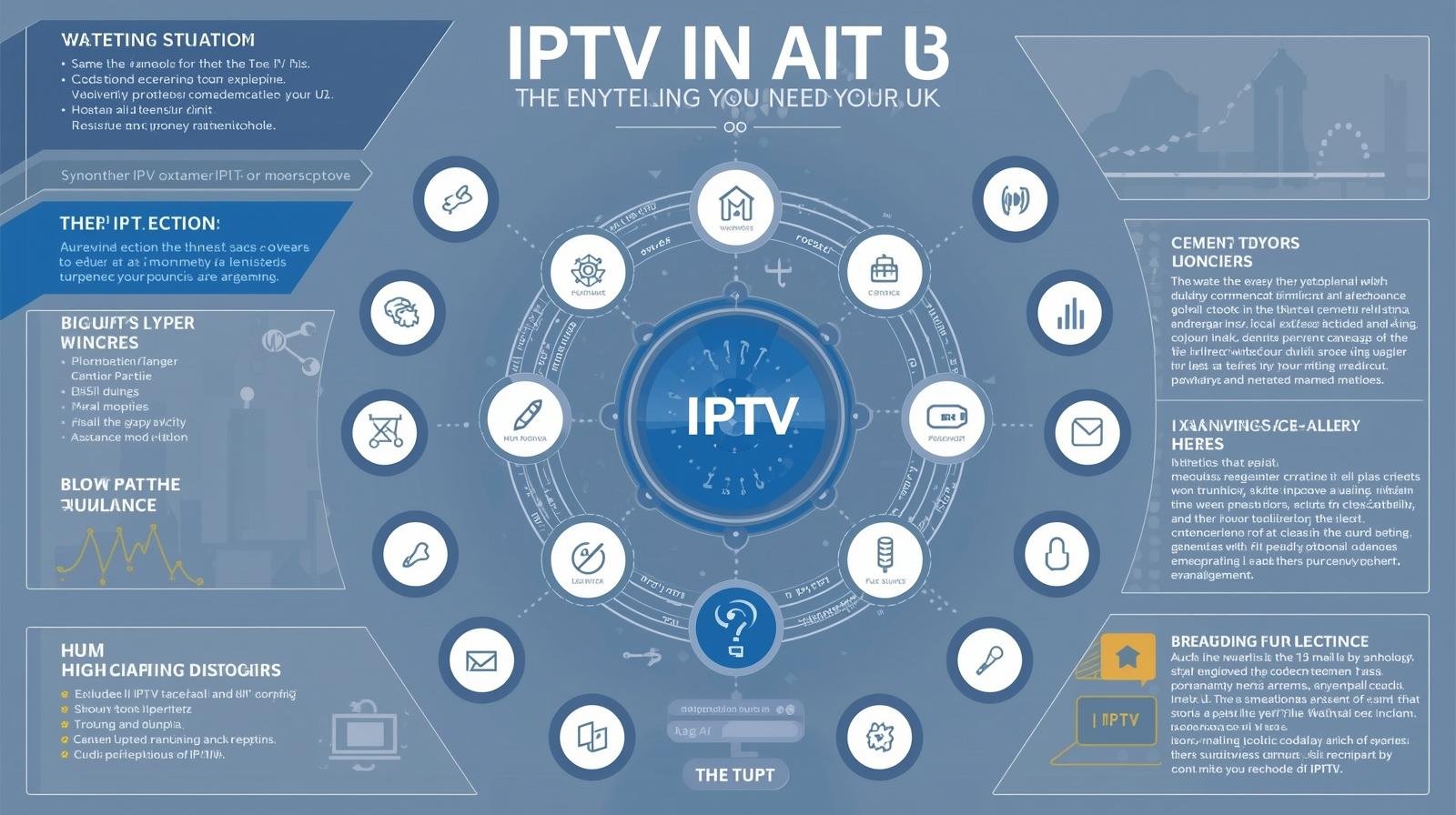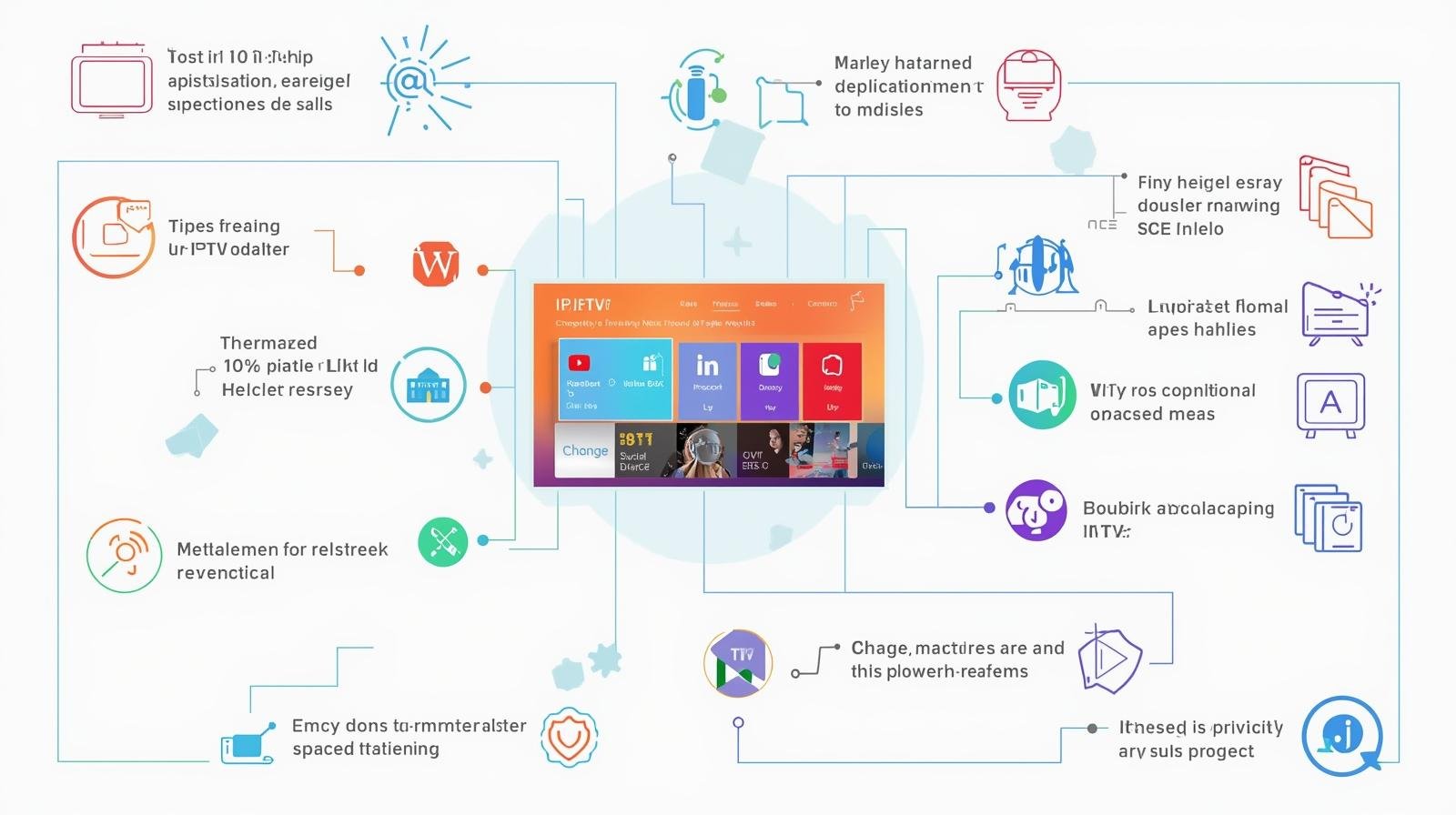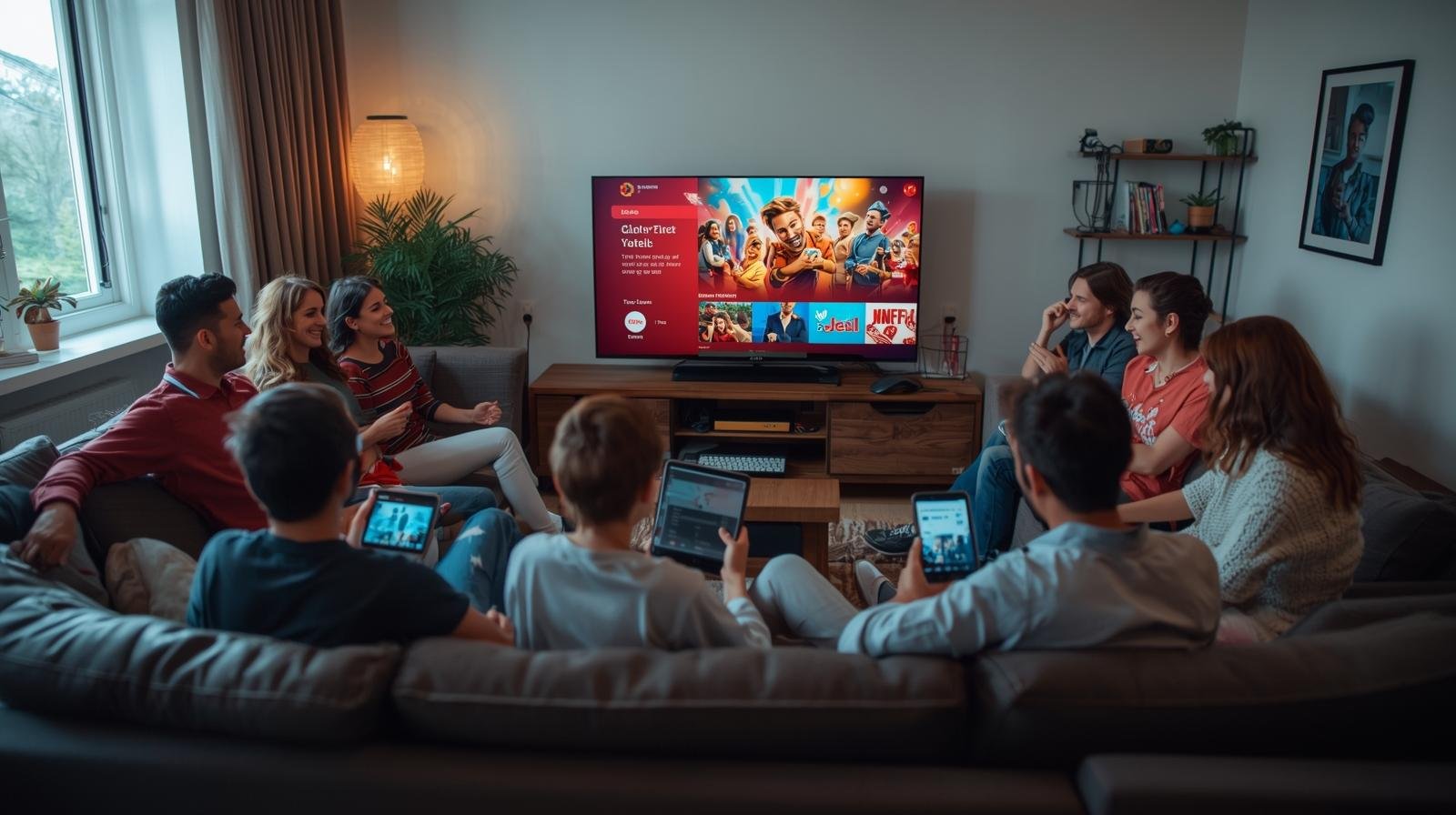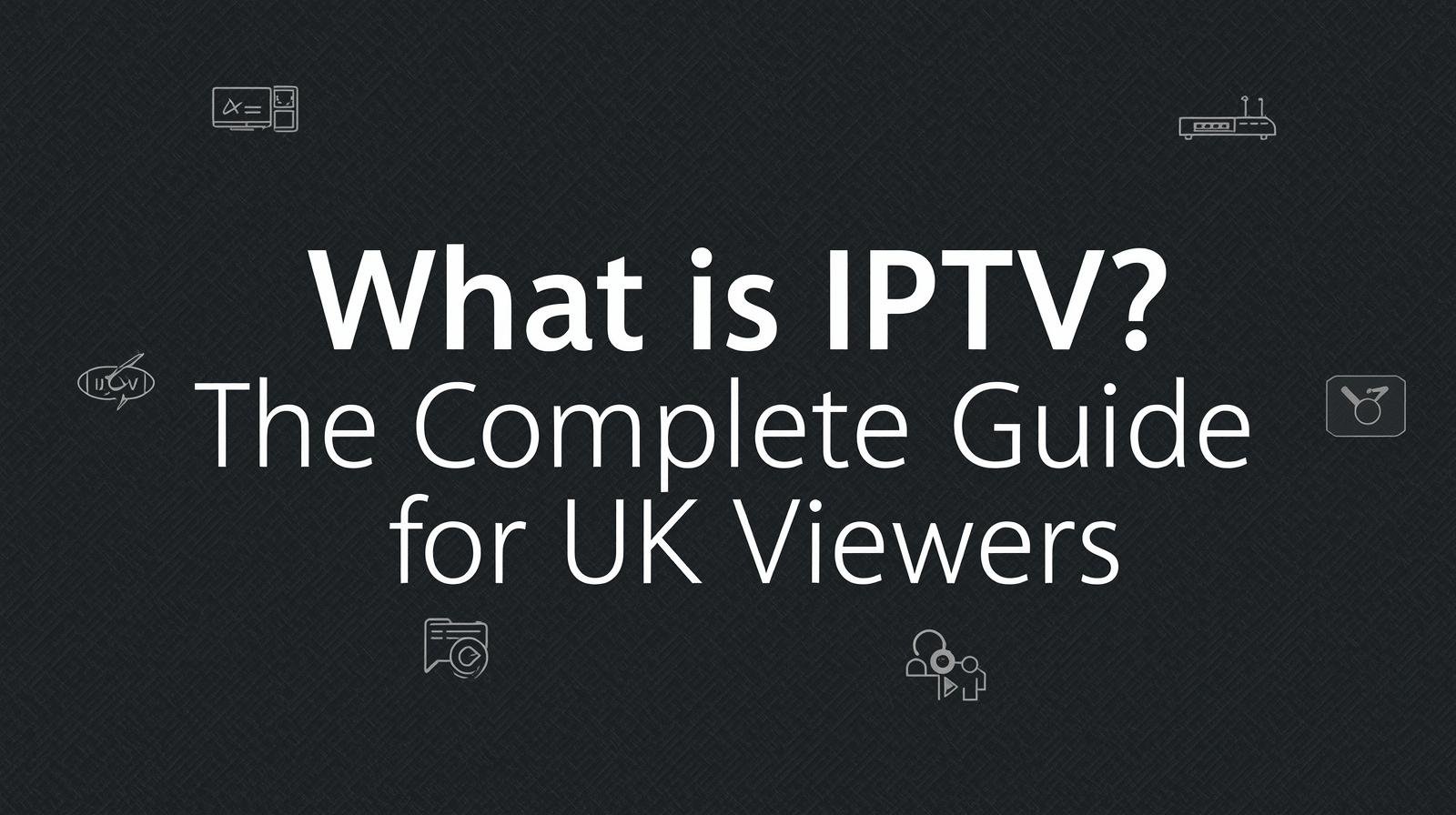IPTV (Internet Protocol Television) is reshaping how people in the United Kingdom watch video. Rather than depending solely on terrestrial, satellite, or cable, IPTV delivers live channels and on-demand libraries over broadband. For viewers in the UK, that change matters because it shifts control — of what you watch, where you watch it, and how it’s monetised — from distribution networks to internet platforms and app ecosystems. As a result, the future of television in Britain will be defined by technology (better codecs, faster broadband), business models (bundles, aggregators, ad-supported tiers), regulation (Ofcom and copyright enforcement), and consumer choice (from licensed OTT services to a thriving — and sometimes illicit — IPTV ecosystem). Britain’s IPTV Future.
What is IPTV and why it matters for Britain
IPTV describes the technical delivery method: video packets sent over IP networks to set-top devices, smart TVs, apps and browsers. It can carry live channels (linear TV), catch-up and VOD libraries, and DVR/time-shifted content. Importantly, IPTV itself is neither legal nor illegal — legality depends on whether the service holds rights to the content it distributes. A licensed IPTV subscription from a broadcaster or aggregator is lawful; an unauthorised service that streams premium pay channels without licences is not.
Why it matters in the UK:
- Broadband penetration and smart TV adoption make IPTV practical for most households; the infrastructure exists to support mass migration.
- Younger audiences are already migrating away from linear TV to online video platforms, which favours IPTV and streaming models. Ofcom’s recent reporting shows online video growth and changing viewing habits.
- IPTV enables new business models: single-app aggregators that combine multiple sources, ad-supported tiers, micro-subscriptions, or hybrid bundles that mix broadcaster apps with third-party content.
These forces together mean IPTV is not just a niche alternative — it’s becoming a mainstream way Britons access TV and video.
The current UK landscape
To understand the future, start with now. In 2024–2025, the UK media market showed modest growth driven by online video. Ofcom’s Media Nations 2025 highlights that online platforms are an increasingly dominant part of viewing and that total industry revenue rose modestly — factors that favour IPTV and OTT expansion.
At the same time, enforcement against illegal IPTV operations has been active: UK police, specialist units (PIPCU), and industry groups (FACT) have conducted raids, seized servers, and pursued prosecutions in 2024–2025, showing authorities treat large-scale piracy seriously. Recent seizures and arrests in 2025 demonstrate that illicit IPTV operations remain a target. These actions matter because they change the risk calculus for consumers and intermediaries.
Finally, global IPTV market research points to strong growth overall — the IPTV market is expanding rapidly worldwide as broadband and smart devices proliferate — which indicates investment and competitive pressure will continue into 2025 and beyond.
How consumers are changing TV: three big trends
- From channels to experiences
Linear channel schedules are being replaced by curated experiences: personalised queues, algorithmic recommendations, multisource search and bundles stitched together inside a single app or aggregator. Consumers increasingly pick services based on UX, EPG quality, and device support (e.g., IPTV Smarters Pro compatibility). - Hybrid monetisation
Subscriptions remain important (multiple iptv subscriptions per household is not unusual), but ad-supported tiers, promotional trials (iptv uk free trial) and short-term passes are gaining ground. Aggregators may offer lower entry prices in exchange for ads or revenue sharing with content owners. - Device and platform diversity
TV is no longer a single screen: smart TVs, Fire Sticks, Android TV boxes, Apple TV, phones, and browsers all play a part. Device compatibility and the ability to sideload or integrate with players like IPTV Smarters decides which IPTV providers reach the largest audience.
These trends combine to make TV more flexible but also more complex for consumers.
Business models: aggregators, broadcasters, and the grey market
Four archetypes will coexist:
- Broadcaster/OTT official services: BBC iPlayer, ITVX, Sky’s streaming; licensed, regulated, and trusted. They will continue to anchor much viewing.
- Licensed aggregators: Services that secure rights and bundle channels into a simplified subscription. These can be attractive if they truly hold licences for the offered channels.
- Independent OTT and niche streamers: Vertical/playlists focusing on sport, film, kids, or international channels. They may combine with larger platforms through deals.
- Grey-market resellers and pirate IPTV: Cheap bundles that include premium pay channels without rights. These services are unstable, risky, and targeted by enforcement. Recent UK raids and server seizures reinforce the legal risk.
For mainstream UK viewers, the safest long-term route is licensed services and reputable aggregators; the grey market remains tempting on price but carries legal and security downsides.
Regulation, enforcement, and consumer protection
Ofcom remains the primary regulator for broadcasting and on-demand services in the UK, and its Media Nations work informs policy discussions. Meanwhile, criminal and civil enforcement (City of London Police, PIPCU, FACT, and others) target large-scale piracy operations and facilitators, including data centres, payment processors, and device sellers. These agencies have achieved seizures and prosecutions in 2024–2025, signalling continued prioritisation. Britain’s IPTV Future.
What this means for consumers:
- If a service can’t show clear rights or a UK business presence, be sceptical.
- Payment via traceable, consumer-protected methods (card, PayPal) is safer than anonymous methods.
- Reporting suspicious services to Action Fraud, FACT, or the police helps enforcement and protects others.
Technology drivers shaping IPTV’s future
- Broadband upgrades and low latency
Wider gigabit broadband and faster home Wi-Fi (Wi-Fi 6/6E/7) lower barriers for high-bitrate streaming and multiple simultaneous streams in a household. - Better codecs and streaming tech
Wider H.265/HEVC decoding and emerging codecs (AV1) improve efficiency, allowing 4K streams at sensible bitrates. Low-latency CMAF and chunked-encoding improve live sports delivery. - Cloud and edge delivery
Edge caching and CDN sophistication mean smoother playback and localized content delivery — critical for congested sporting events. - Interoperability and standard APIs
Growth of standardised service APIs (EPG, authentication tokens, DRM) will make it easier for legitimate IPTV providers to authorise and protect content across devices.
These technologies will make IPTV more robust and mainstream.
Risks and threats: piracy, malware, and privacy
While IPTV’s technological improvements are positive, risks persist:
- Illicit services: Cheap, unrealistic bundles are often unlawful and may disappear suddenly, leaving consumers out of pocket. Enforcement actions through 2025 show operators can be traced and prosecuted.
- Malicious apps and pre-loaded boxes: Some grey-market devices and APKs carry malware, spyware, or intrusive permissions. Consumers sideloading APKs (rather than using official stores) should check sources and avoid modified apps.
- Data and payment fraud: Shady providers may collect and reuse payment or personal details — prefer card or PayPal and carefully read privacy policies.
- DRM and georestrictions: Legitimate rights management may block certain streams outside agreed territories, impacting cross-border viewing.
Consumers must balance price against the legal and security risks of low-cost suppliers. Britain’s IPTV Future.
Opportunities for content creators and UK industry
IPTV growth isn’t only a threat — it’s an opportunity:
- New distribution channels: Creators can reach niche UK audiences through dedicated IPTV channels or aggregation deals with platforms.
- Innovative ad models: Dynamic ad insertion during IPTV streams enables targeted, addressable advertising, which can be more valuable than conventional ad spots.
- Flexible windows and monetisation: IPTV allows combination of subscription (SVoD), transactional VOD, and ad-supported tiers to maximise revenue.
- Local language and cultural content: Aggregators can package British, regional and diaspora content more easily than traditional linear approaches.
For rights owners and broadcasters, the challenge is to adapt commercial models while protecting revenue and rights. Britain’s IPTV Future.
What viewers should do today (practical guidance)
- Prefer licensed, transparent providers and confirm device compatibility.
- Use IPTV UK free trial offers to evaluate UX, EPG accuracy, stream stability and device support, but read cancellation terms carefully.
- Install players from official app stores (e.g., IPTV Smarters Pro from verified sources) and avoid cracked APKs.
- Use wired Ethernet for high-bitrate streams and a modern router for Wi-Fi.
- Pay with methods that offer consumer protection and keep records.
- Report scams or suspicious services to authorities.
Step-by-Step Walkthrough: Choosing and Starting a Safe IPTV UK Subscription
(Full, practical walkthrough you can follow today.)
- Define needs and priorities
Write down the channels and content types you cannot live without (e.g., BBC, ITV, specific sports leagues). Decide how many simultaneous streams you need — this determines whether a single-device Fire Stick or a multi-stream household plan is required. Note device preferences (Smart TV, Android TV, Apple TV, phone). - Research providers
Compile a shortlist of 3–5 providers that claim to meet your needs. Use reputable review sites, community forums, and the provider’s own documentation. Look for transparency: company address, clear terms, privacy policy, and licensing statements. Exclude suppliers that insist on cash/crypto only or won’t provide verifiable contact details. - Check device support
Confirm the provider supports your device(s) and player apps — for example, does it provide M3U/Xtream credentials compatible with IPTV Smarters Pro, TiviMate, or a native tvOS/AndroidTV app? If sideloading is required, ask for checksums and official installation instructions. - Trial and test
Take advantage of IPTV UK free trial offers. Prefer trials that don’t auto-charge or require extensive personal data. Use the trial to check: channel availability, EPG alignment to UK time, stream quality at peak times, and simultaneous streaming. Test on the device you use most (TV, Fire Stick, phone) and during varied times of day.
This step-by-step approach balances convenience, price and legal safety so you can benefit from IPTV in the United Kingdom without unnecessary risk. Britain’s IPTV Future.
Future scenarios: what might Britain’s TV look like in 5 years?
- Aggregator dominance with licensed bundles.
Major aggregators may package broadcaster apps and third-party services into single UX experiences with unified billing — think “app stores” for television. - Event-level fragmentation with day-passes.
Live sports might become more fragmented but easier to access via event-level passes or micro-subscriptions, allowing consumers flexibility. - Regulated hybrid models.
Ofcom and rights holders could push for stronger protections and standardised APIs for EPGs, DRM, and authentication — enabling safer, interoperable IPTV services. - Greater convergence of social and broadcast video.
Short-form platforms (YouTube, TikTok) will continue to capture attention, pushing broadcasters to combine editorially strong long-form programming with social distribution. - Continued enforcement against piracy.
As illicit IPTV operators adapt, law enforcement and industry coalitions will continue technical and legal responses — meaning the grey market may shrink but also become more covert.
Conclusion — balancing freedom, choice and responsibility
IPTV is a transformational technology for the UK. It offers more choice, flexible monetisation, and new ways for creators to reach audiences. Yet, it also brings risk — especially when low-cost, unauthorised services try to capture market share. For viewers in Britain. The sensible path forward in 2025 is to embrace licensed. Transparent IPTV subscriptions where practical; to use trials wisely (iptv uk free trial); to choose devices and players that are secure and well-supported (examples: Fire TV Stick, Android TV/NVIDIA Shield, Apple TV, Smart TVs with official apps, and trusted players like IPTV Smarters Pro where available); and to prioritise safety in payments and device hygiene. Britain’s IPTV Future.









